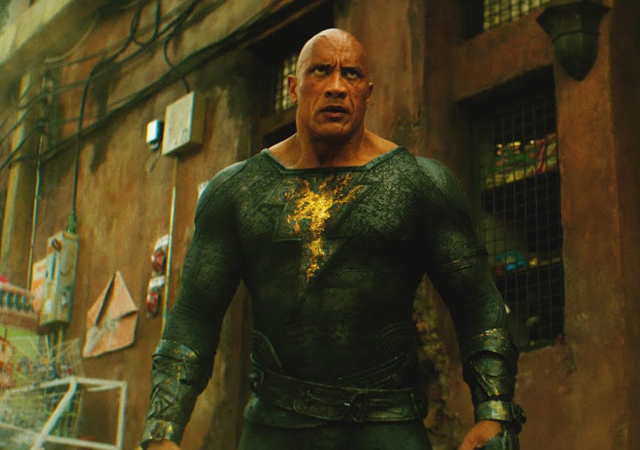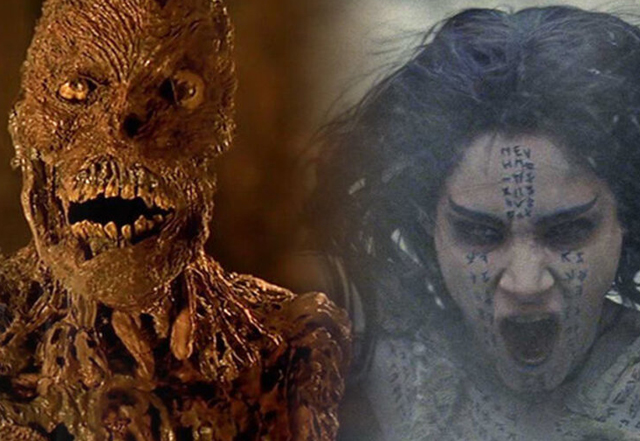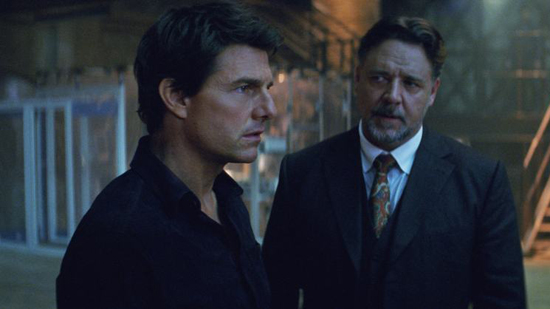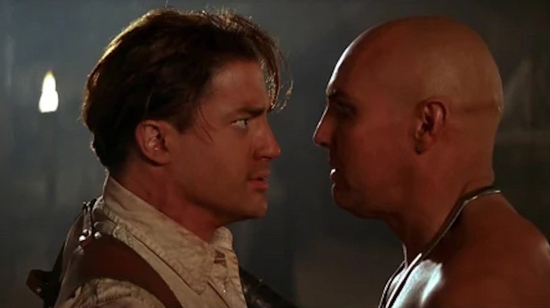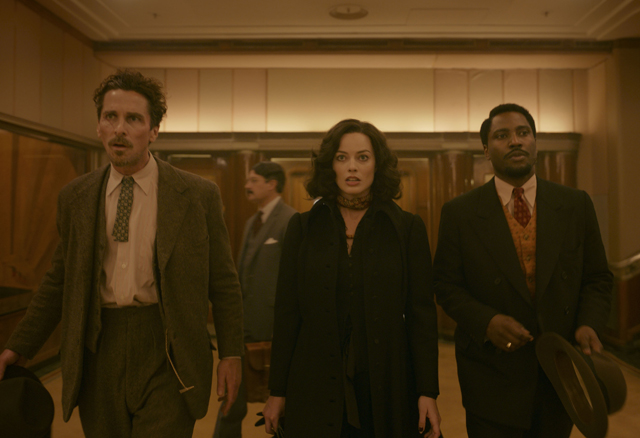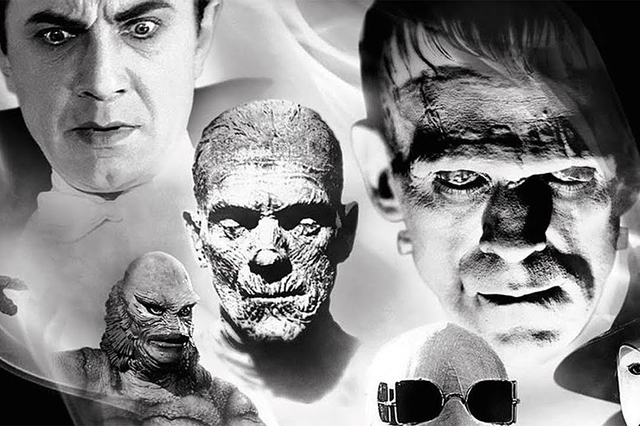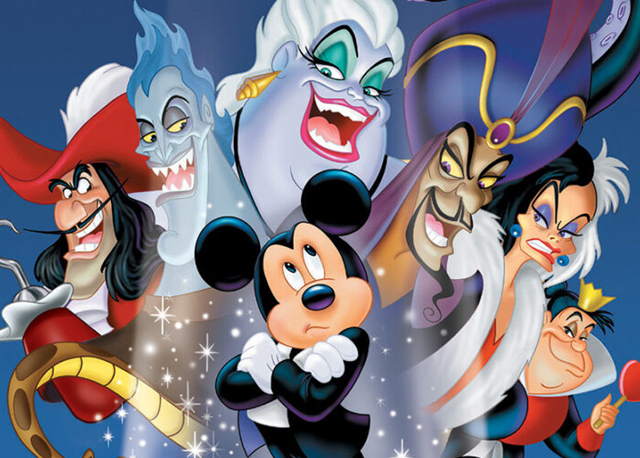
Like many other Halloween seasons, I’ve spotlighted some of the best villains to have graced the silver screen over the years. I’ve been especially interested in examining the rogues gallery of Disney Animation in particular, mainly because these are the bad guys that I grew up watching as a child and they for me, and a lot of other children like me, left a major impression. I was especially fortunate to have come of age during the heralded Disney Renaissance of the late 80’s and early 90’s, and with this new crop of instant classic animated features, we were also treated to a whole new group of iconic baddies. That’s not to say the old timers were forgotten either; they just had more bad company. But what really sets the Disney Villains apart from most other great movie villains is that they often come with their own theme song. The Disney Villain songs are often among the best in the whole Disney Songbook. And I’m sure that they are especially fun for the songwriters to pen, given that you can finally let loose and indulge the dark side a bit to bring some vitriol into the lyrics. When at their best, a Disney Villain song can be operatic and foreboding but also at the same time subversively campy. Over the years, Disney has collected quite a few great tunes that are perfect examples of this formula. Not all of them have to be dark; quite a few are actually quite silly and fun to sing along to. But what makes the great Villain songs iconic is in how it best sets up the persona of the villain. It’s in these songs that we learn what makes these characters tick; what motivates them. We also see how they view themselves, often with vanity and lack of self-awareness. And the best villain songs are also the ones that firmly establishes these characters’ place within the story and why they will be such a major obstacle to our heroes.
For this article, I’m listing my choices for the Top Ten Disney Villain Songs. For this, I’m not just limiting it to the canonical animated films; some of the other Disney properties small and large are eligible too, including animated films from other studios within the company. The only rule is that it has to be a song original to the film that it is in. What is interesting is that not every villain song is sung by the villain. It can be sung about them by another character, and those count as well. Unfortunately some of the greatest Disney villains like Maleficent of Sleeping Beauty (1959) and Lady Tremaine of Cinderella (1950) never get their own songs despite their respective movies being musicals. And then there are others like Sher Khan from The Jungle Book (1967) and Jafar from Aladdin (1992) who do both get to sing, but only as a part of another character’s song. There are quite a lot of villain songs to choose from, but what I picked here is what I think represents the best examples of what a Villain song should be, and how much importance it has in the grander history of Disney Animation. So, let’s sit back and listen to the Top Ten Disney Villain songs.
10.
THE HEADLESS HORSEMAN from THE ADVETURES OF ICHABOD AND MR. TOAD (1949)
Music and Lyrics by Don Raye and Gene de Paul; Sung by Bing Crosby
Here’s a case of a Villain song that’s sung about the said menace and not by him. Honestly, how could he sing, he has no head. What is interesting about the Headless Horseman song is that it was rarity for it’s time in Disney movies. Villain songs weren’t a mainstay of Disney movies yet. The Wicked Queen didn’t have a song in Snow White and the Seven Dwarves (1937), nor did any of the trio of villains in Pinocchio (1940). But, as Walt Disney was beginning to reinvent his studio in the Post War years, he was much more inclined to make music an important feature in his story, even with the villainous characters. The Adventures of Ichabod and Mr. Toad (1949) was the last of the package features of Disney’s post-war period; a cost saving measure that allowed Disney to release feature length films without having the expense of making feature length stories. As the title would suggest, this film contained adaptations of the classic stories The Wind in the Willows (with it’s lead character Mr. Toad) and The Legend of Sleepy Hollow (with the character of Ichabod Crane). The Legend of Sleepy Hollow by Washington Irving is one of the foundational texts of American Fiction literature, so it was going to be interesting to see how Disney would adapt this gothic tale in it’s own style. When it comes to the iconic Headless Horseman himself, Disney did a pretty remarkable job in bringing him to life, because he is genuinely terrifying. What helps to set up his memorable presence at the conclusion of this film is the song that establishes his terrifying mythology. For a story set in colonial America and with a terrifying monster as it’s subject, it’s odd that the Disney songwriters would use contemporary swing music for the style of this song. And yet it works. It probably helps that one of America’s most iconic singers, Bing Crosby, was tasked with giving the tune it’s unique sound. It’s got a catchy beat, but there is kind of a spooky undertone to the whole song which guides it and makes it work as a pretext to the ghostly Horseman we meet later. This song is one I would see presented on Disney Channel Halloween specials all the time, so I especially associate it with this time of year. So don’t try to figure out a plan, you can’t reason with a headless man.
9.
WHO’S AFRAID OF THE BIG BAD WOLF? from THE THREE LITTLE PIGS (1933)
Music by Frank Churchill; Lyrics by Ted Sears; Sung by Dorothy Compton, Mary Moder and Pinto Colvig
We of course can’t talk about Disney Villain songs without mentioning the original. During the early 1930’s, Walt Disney helped to grow his burgeoning studio with a series of one-shot short cartoons to run alongside his enormously popular Mickey Mouse series. These were called the Silly Symphonies. They were short stories often centered around music, but also based on familiar fables and fairy tales. These shorts were often more ambitious in their artistry, and it’s where Disney had his team experiment and refine the tools they would need to eventually make feature length films. Without question, the most popular of these Silly Symphonies was a short based on the fable of The Three Little Pigs. But even more famous than the short itself was the song that was written for it about it’s memorable antagonist, the Big Bad Wolf. In another example of a song about a villain and not sung by him, “Who’s Afraid of the Big Bad Wolf,” is a very simple song about facing down the menace in front of you and staying strong, though with a sense of naivete. The titular pigs first sing the song as a taunt, shirking off the danger of the wolf and devoting themselves to oblivious playtime. But, as the wolf blows down both of the first pigs’ homes of straw and wood, they eventually escape to the third pig’s house of bricks. Then they sing the song again but this time, it’s a song of defiance. This resonated with audiences who were going through the Great Depression at the time. As much as the Big Bad Wolf of the Depression was going to push them down, Americans were going to pick themselves up again. “Who’s Afraid of the Big Bad Wolf” transcended it’s place in the story and became a rallying cry of resilience in a hard time for this country. Because of that, it became Disney’s first ever chart topping hit. It’s especially remarkable that a villain song would be the first tune to actually do that for the Disney Company, which of course would not be the last. No matter how small or simple a villain song may be, if it connects with it’s audience, it can become a part of the culture itself.
8.
FRIENDS ON THE OTHER SIDE from THE PRINCESS AND THE FROG (2009)
Music and Lyrics by Randy Newman; Sung by Keith David
One of the more recent classic villain songs comes from this noble attempt by Disney to restart up their traditional animation unit in an era of computer animation dominance. Naturally, they turned to the formula that worked so well during the Renaissance years; classic fairy tales with Broadway sized musical numbers. With The Princess and the Frog, they shook things up a bit, setting the famous fairy tale of the Frog Prince in 1920’s New Orleans, and centering around their first African American princess, named Tiana. Because this was a New Orleans set story, naturally the music had to be jazz influenced. Bringing over Pixar mainstay Randy Newman to write the score and songs, they found that unique Cajun country sound and worked it into every melody in this story, including of course for it’s Villain song. The antagonist for this version of the story is a Voodoo practicing Witch Doctor and conman named Dr. Facilier, played with gusto by veteran actor Keith David. He makes his grand entrance into the story by ensnaring Prince Naveen into making a devil’s bargain and thereby turning him into a frog. And his introduction is of course through song. The jazz influence is especially felt in this tune, feeling very much in the same class as the big band music of Cab Calloway. The song “Friends on the Other Side” really does feel like a spiritual cousin to the jazz music of old time cartoons, like the Fleischer studios shorts that were often dark and creepy in their own way; which Calloway in fact contributed music to as well. Keith David, who’s not really known as a singing performer, manages to belt out this complex song with remarkable skill. The animation also does a great job of making this a big show stopping number, even working some of Cab Calloway’s swaying and strutting into Dr. Facilier’s dance moves. With this, Disney showed that even though the Renaissance era formula was not as resilient as it once was they could still deliver a Villain song that stood up well with the best of them.
7.
WE DON’T TALK ABOUT BRUNO from ENCANTO (2021)
Music and Lyrics by Lin-Manuel Miranda; Sung by Carolina Gaitan, Mauro Castillo, Adassa, Rhenzy Feliz, Diane Guerrero, and Stephanie Beatriz
Is it possible to write a Villain song for a character that isn’t a villain. Furthermore, is it possible to make that same song a record-breaking hit. Well, that’s what actor and songwriter Lin-Manuel Miranda found out when he wrote this latest Disney mega-hit earworm. In the story of Encanto, we follow the story of the magical Madrigal family. They are a family celebrated for their gifts and are closely knit unit, but there is one part o f their family history that they wish to erase; the eldest son of the family, Bruno. As we learn in the film, Bruno is not malevolent figure but rather misunderstood outcast who is sadly shunned by his own family for no good reason. But, we learn that later on in the story after the Madrigal family air their grievances in this ensemble tune. They each share their bad experiences that resulted after hearing the oracle like prophecies that Bruno gathered through his powers. It all makes Bruno seem like this mischievous agent of chaos, but in reality it’s a projection of their own anxieties coming to the forefront and they are just scapegoating the messenger for making them miserable. But, in the tradition of great Disney Villain songs, this song establishes a more foreboding tone and does so with one of the catchiest beat in a Disney movie in quite some time, thanks to the talents of the award winning Miranda. This song became a surprise hit for Disney, even surpassing the record-breaking success of Frozen’s “Let it Go.” Sure Disney can still make a hit song, but it rarely these days is it the film’s ‘villain” song and even much less a ensemble one at that. But, “We Don’t Talk About Bruno” is that rare exception and it’s easy to see why. It’s catchy, it sets the right tone, and it’s a great centerpiece to the message to the story, which is to not judge something on it’s surface level. With all that it’s a hard thing to say no to Bruno, no, no.
6.
GASTON from BEAUTY AND THE BEAST (1991)
Music by Alan Menken; Lyrics by Howard Ashman: Sung by Jessi Corti and Richard White
Proof that not all Villain songs need to be dark and menacing. Like this one, it can be a fun, foot tapping romp of a song. We don’t see the darker, murderous aspects of Gaston’s character until the latter half of the movie. Up to this song, Gaston is just a town jock who mistakenly believes that he’s the right person for the most beautiful girl in town; our heroine Belle. After being rejected by her, Gaston sulks in his tavern, and is only uplifted once his lackey LeFou begins to sing his praises. The whole song basically one big ego trip for the villain, but like all the other songs in the movie, it’s exceptionally catchy and well-written. You really have to admire the creativity on lyricist Howard Ashman’s part to fill so many funny lines into every part of the song. It’s especially a special trick to work the word expectorating into a song, but he managed to do it. And I’m sure everyone has repeated the most laugh out loud line, “Every last inch of me is covered with hair.” Still, the song does a good job of establishing Gaston as a foe worth fearing. He’s vain and he’s strong, which is a dangerous match. After the light hearted part of the song finishes, the movie takes a turn when Belle’s father warns of her imprisonment in the Beast’s castle, coming across as a raving lunatic in that tavern setting. After Maurice is kicked out, Gaston begins to contemplate a plot to incarcerate the old man as ransom for Belle’s affections, and the song starts up again with a whole different context to Gaston’s character in it’s reprise. This is a perfect example of character building within a villains song, where a villain’s true nature emerges through how the song is used as part of the story. Before we see Gaston as a local town hero; afterwards we see him as the schemer he really is. Even still, it remains that rare jovial villains song, and a perfect fit for the character himself. Broadway performer Richard White does an especially great job of belting out this song with the gusto that a blowhard like Gaston would want to be heard with. In the pantheon of memorable Disney villain song performances, no one sings as hard as Gaston.
5.
OOGIE BOOGIE SONG from TIM BURTON’S THE NIGHTMARE BEFORE CHRISTMAS (1993)
Music and Lyrics by Danny Elfman; Sung by Ken Page
Looking outside the canonical Disney animated films for a moment, there is one unmistakable classic villain song from this stop-motion film about the collision of two holidays. From the mind of Tim Burton, The Nightmare Before Christmas is a story about the denizens of Halloweentown, a community of creatures associated with the holiday, who all decide that they want to participate in Christmas time as well, all spear-headed by their ruler the Pumpkin King, Jack Skellington. Though scary on the outside, the citizens of Halloweentown are not mean spirited and cruel. That is except for the boogie man who has been exiled out of town, Oogie Boogie. When Jack Skellington believes he has granted Santa Claus an overdue holiday of his own, he in actuality has sent him off to be tortured by the malicious Oogie in his underground dungeon. Oogie Boogie is a very minor character in the story overall, appearing for the first time very late in the film, but boy does he make the most of his limited screen time. Composer Danny Elfman’s score for the film is distinctly within his style, similar to the work he had done for other Tim Burton films like Beetlejuice (1988) and Edward Scissorhands (1989), only now as a full blown musical. And though the Elfman sound is present in every song, he still manages to experiment a little with style, especially when it comes to Oogie Boogie. Given the giant sack of bugs’ proclivity towards gambling, Elfman gave his song a speak-easy jazz club sound, and it’s a perfect match for the character. It also helps that St. Louis-bred Broadway performer Ken Page gives a boisterous performance as the character, very similar to the Cab Calloway sound that Dr. Facilier was also inspired by. Of the songs that Danny Elfman wrote for the film, you’d have to imagine that this was one of the more fun ones to write. And for a villain with very little to do in the movie as a whole, you couldn’t have asked for a better villain’s song to announce his presence in the grandest way possible.
4.
CRUELLA DE VIL from 101 DALMATIANS (1961)
Music and Lyrics by Mel Leven; Sung by Bill Lee
The classic 101 Dalmatians is not a musical, but it still contains two original songs. One of those songs just happens to be about the movie’s iconic villainess, Cruella De Vil, and naturally just like it’s subject, it is one of Disney’s all time greats. Another one of those songs that’s about the villain and not sung by her, “Cruella De Vil” is a great example of using a song to establish everything that makes your villain as memorably mean as they can be. Worked into the story by the fact that the titular Dalmatians’ owner, Roger Radcliffe, is a songwriter by trade, this song is a perfect accompaniment for the scene that introduces Cruella into the movie in a memorable way. Roger makes no illusion about his distaste for Cruella through all the devious, venomous lyrics of his impromptu song, probably as a means of teasing his beloved wife Anita who is still associated with the fashion diva, but the subject matter does manage to live up to song that’s about her. The introduction scene has the song as bookends to Cruella’s introduction, with the melody playing throughout, and it’s one of the great Disney villain intros of all time. Cruella flies through the scene in a smoke filled fury, like a hurricane sweeping through the Radcliffe home and it perfectly establishes her chaotic nature right away. And with the song there as part of that scene, the character and her tune are linked forever. It’s a nice representation of post-War British pop music as well, the kind of sound that would define the culture of that period before Beatle-mania would shake things up again. Even so many years after it was first heard, this song is still a favorite, often re-mixed and performed anew by musicians and singers of all ages. Cruella De Vil is a character that remains one of the all time great Disney villains and it’s fitting that the song that follows her legend around also remains popular to this day.
3.
BE PREPARED from THE LION KING (1994)
Music by Elton John; Lyrics by Tim Rice; Sung by Jeremy Irons and Jim Cummings
The Lion King has one of the most iconic and ground-breaking musical scores of any Disney film, so it’s only natural that it’s villain’s song would be among the best too. Scar, the power-hungry uncle of our main hero Simba, is certainly one of the darker villains in the Disney canon. It’s not exactly easy to write a song for a character whom we know has murder as an intent in his master plan. You can’t make the song too entertaining because it might make the character too likable. In the movie, they manage to give the right tone to Scar’s villain song, “Be Prepared.” It’s catchy, but also foreboding. You can’t really get much darker than bringing in fascist style imagery as Scar’s army of hyenas march past him like it’s out of a Leni Riefenstahl film. But it works perfectly in establishing just how much of a threat Scar would be as a king. Elton John and Tim Rice do a perfect job of making the style of a villain’s song work in the African-influenced sound of the entire film’s score, especially with the percussion beat. They are also not afraid to bring a little bit of camp into Scar’s performance of the song as well; this is a Disney villain song after all. It is also a song that is perfectly matched with the vocal performance of Jeremy Irons in the role of Scar. The actor is a talented singer, but he’s not really known that well for that talent as an actor. Here, he was allowed to show how much rhythm he could get out of that natural gravelly voice of his, and it’s perfectly attuned to this type of song. It’s especially effective the way he growls out the title “Be Prepared” in the way a lion would roar it. Unfortunately, Iron’s range couldn’t quite hit the high notes in the final part of the song, so veteran voice actor Jim Cummings (who also played the hyena Ed in the film) was called upon to match Irons performance as best as he could to complete the song. It’s honestly pretty seamless, and I didn’t even know that the voices change in the song until many years later. In the movie, the staging also reaches very Broadway levels of spectacle, with the green glow of the geysers giving the whole number an eerie feel. It’s a great match of voice, music and staging put together for one of the quintessential Disney villain songs in the whole songbook. So, be prepared for this classic to be talked about for a long time.
2.
HELLFIRE from THE HUNCHBACK OF NOTRE DAME (1996)
Music by Alan Menken; Lyrics by Stephen Schwartz; Sung by Tony Jay
By far and by a mile this is the darkest villain song Disney has ever had in one of their films, and probably the darkest in the songbook as a whole. It’s only fitting that it comes from one of Disney’s darkest villains; Judge Claude Frollo. For a lot of people, it seemed like a fool’s errand to try to take Victor Hugo’s medieval gothic tale and turn it into a musical with a happy ending. But Disney managed to do their best with it, and still maintain some of the book’s darker elements in tact. Frollo is the one character that feels most aligned with the original tone of the novel in this adaptation, and remarkably the team of Menken and Schwartz were able to give him a song that fit with his character. The pious, unforgiving and deviously minded tyrant is certainly not an easy character to write for, so what do you have him singing about. What Menken and Schwartz stumbled upon was a crisis of faith that roils inside of the character, as he believes he is doing God’s work on Earth, and yet he lusts for a woman who is from the gypsy race that he has deemed to be unholy in the eyes of God. In the movie, we see his inner turmoil boil over into some heavy demonic imagery as faceless red robed figures encircle him in a dark room illuminated by fire. This haunting imagery goes beyond what we’ve seen in most other Disney movies, descending into a really gothic and macabre vision of what Frollo’s hellscape may be like. “Hellfire” really stands out as a song not just for that kind of imagery, but also for the tour de force vocal performance of Tony Jay. The veteran voice actor manages to achieve remarkable range with that deep baritone of his, even hitting that killer of a high note at the end. His vocal performance as Frollo beforehand was already an iconic one for a Disney villain, but this villain song takes him immediately into legendary status. You can tell that the filmmakers were really testing their boundaries with this villain song, and they probably ended up being surprised by just how far the Disney execs actually let them go. And like all the best Villain songs, it firmly establishes the soul of the character it’s about, and with Frollo we really reach as close to the depths of darkness as Disney has ever gone before. “Hellfire” is Disney at it’s very darkest, and that is something that truly makes it’s presence in this movie, and as part of the Disney songbook as a whole, truly iconic.
1.
POOR UNFORTUNATE SOULS from THE LITTLE MERMAID (1989)
Music by Alan Menken; Lyrics by Howard Ashman; Sung by Pat Carroll
If you are looking for just that one song that encapsulates every that is great about a villain song, look no further than the one that comes from the dastardly sea witch, Ursula. “Poor Unfortunate Souls” has it all; a great melody, genius lyrics, a killer vocal performance and an important place with the story it’s a part of. This really is the gold standard of great Disney villain songs, and it’s fitting that it came as part of the movie that helped to launch the Disney Renaissance. Alan Menken and Howard Ashman had refined their talents on Broadway before coming to Disney, but even before that they belonged to the same Baltimore area art scene that produced the likes of edgy, maverick filmmaker John Waters. And by being in that circle, they became friends with drag performer Divine, who would end up being a major influence on the character of Ursula. While Ashman was writing the lyrics to this song, I wonder if he was imagining how Divine would look singing this same tune on stage. Divine passed away before the movie completed, so she never got that opportunity, but this tribute does live on. Not only is is operatic and Broadway like in it’s sound, but you can hear Menken and Ashman working a bit of burlesque into the song as well, which is perfectly suited for a show off character like Ursula. But what really makes this song iconic is the vocal performance by the late, great Pat Carroll. The actress and comedian was not a natural singer, but you wouldn’t know that by the absolute commitment she brings to her performance here, much of which she imitated from Ashman’s own rendition in his demo tape, including the ad-libs like “innit.” But what is amazing is how the song goes from quiet and sultry in the beginning to big and operatic by the end, and Pat does not miss a beat. It’s a song that like all the others in the movie The Little Mermaid announces that Disney is back with a vengeance. “Poor Unfortunate Souls” remains a popular tune 30 years later, and it’s a special favorite for drag performers who understand the song’s history and inspiration behind it. And it of course does what all the best villains song do; shine a spotlight on it’s villain. Ursula is obviously the kind of villain who deserves the best, and it didn’t cost much; just a voice.
So, there you have the ten best Disney villain songs in my own opinion. I definitely tried to weigh how much each song meant to the films they come from, and how well they stand out in the whole history of the Disney songbook. It’s surprising to see how some songs from the early days of Disney still resonate so many years later. The song “Who’s Afraid of the Big Bad Wolf?” is not just an icon of Disney movies, but of the culture as well, as it became a rally cry for Depression effected Americans. The songs for Cruella De Vil and the Headless Horseman have also withstood the test of time, with the Headless Horseman song even being a Disney Halloween staple. But of course, it’s the Renaissance era songs that resonate the most, as the Broadway influence became much more intertwined with the music of Disney Animation. Ursula, Gaston, Scar and Frollo have each been elevated in the Disney rogues gallery not just by their dark deeds but also by these iconic songs that shine a spotlight on them within the story. It’s just too bad that as Disney has moved away from the musical formula, it has also made the Villains song less of a presence as well. I think one of the reasons “We Don’t Talk About Bruno” became such a big hit as it was may have been due to the drought of memorable villain songs that had come before it. There are other interesting villain songs that I left out of my list, like “The Elegant Captain Hook” from Peter Pan (1953), “The World’s Greatest Criminal Mind” from The Great Mouse Detective (1986) and “Shiny” from Moana (2016), and Disney has produced many other spooky themed song that don’t necessarily categorized as a villain song, like the Haunted Mansion’s “Grim Grinning Ghosts.” Needless to say, Villain songs are a valuable category all to themselves in the great Disney songbook, and these tunes are especially popular during this spooky time of year. I hope you found my choices interesting and well placed. I hope some of your favorites are here as well. So, have a festive Halloween this year and like the tunes sung on this list put a little spell on you.
